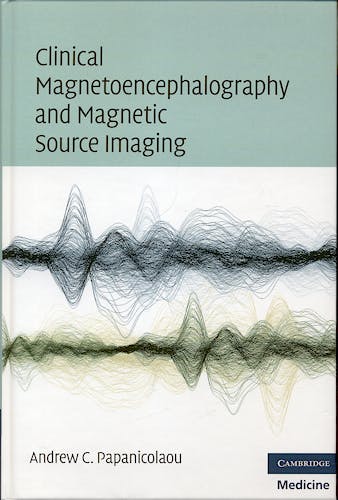

No hay productos en el carrito



Clinical Magnetoencephalography and Magnetic Source Imaging
Papanicolaou, A.
1ª Edición Agosto 2009
Inglés
Tapa dura
207 pags
1000 gr
16 x 24 x 2 cm
ISBN 9780521873758
Editorial CAMBRIDGE
LIBRO IMPRESO
-5%
166,89 €158,55 €IVA incluido
160,47 €152,45 €IVA no incluido
Recíbelo en un plazo de
2 - 3 semanas
LIBRO ELECTRÓNICO
-5%
150,51 €142,98 €IVA incluido
144,72 €137,48 €IVA no incluido
Acceso On Line
Inmediato
Description
This is the first volume to explore the field of clinical magnetoencephalography
(MEG) and magnetic source imaging (MSI), the techniques measuring the magnetic
fields generated by neuronal activity in the brain. Describing the empirical
knowledge gained during the last two decades, this book will serve as a basis
for the training of clinicians and scientists entering this new and exciting
field. The book covers the methods for recording MEG and performing MSI in a
clinical setting and includes practical examples of data collection and analysis.
It explains why MEG should be used in the evaluation and treatment of patients
being considered for epilepsy surgery, concluding with a section describing
the potential for future applications of these methods. This is essential reading
for graduate students in clinical neuroscience, residents in neurology and psychiatry,
neuroradiology and neurosurgery, specialists in neurophysiology and epilepsy,
and clinicians in a wide range of related brain sciences.
• The only comprehensive and practical reference available • Provides a detailed description of recording methods and addresses issues encountered in a clinical setting • Provides an in-depth discussion of why and how the techniques are useful
Contents
Preface; Part I. The Method: 1. Basic concepts; 2. The nature and origin of
magnetic signals; 3. Recording the magnetic flux; 4. Overview of MSI using the
single equivalent current dipole (ECD) model as an example; 5. The fundamental
problems of MSI; 6. Head models; 7. Source models - discrete source models;
8. Source models - distributed source models; 9. Source models - beamformers;
10. Pragmatic features of the clinical use of MEG/MSI; References; Part II.
Spontaneous Brain Activity: 11. MEG recordings of spontaneous brain activity
- general considerations; 12. Normal spontaneous MEG frequently encountered
artefacts; 13. Spontaneous MEG morphology; 14. Abnormal spontaneous MEG; 15.
Contributions of MEG to the surgical management of epilepsy - general considerations;
16. MEG investigations in lesional epilepsies; 17. MEG investigations in nonlesional
epilepsies; 18. Pediatric nonlesional epilepsy surgery; References; Part III.
Evoked Magnetic Fields: 19. Recording evoked magnetic fields (EMFs); 20. Somatosensory
evoked fields (SEFs); 21. Movement-related magnetic fields (MRFs) - motor evoked
fields (MEFs); 22. Auditory evoked magnetic fields (AEFs); 23. Visual evoked
magnetic fields (VEFs); 24. Language-related brain magnetic fields (LRFs); 25.
Alternative techniques for evoked magnetic field data - future directions; References;
Postscript: Future applications of clinical MEG; Overview; Normal aging and
neurodegenerative disorders; Neurodevelopmental disorders; Psychiatric disorders;
Neurological disorders; Functional reorganization; References; Index.
© 2025 Axón Librería S.L.
2.149.0